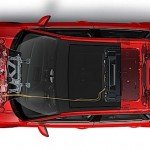Traditional personal protective equipment is normally designed to help protect workers when accidents happen and aid in responding to the aftermath of accidents. But modern technology looks to be revolutionizing the PPE industry, with sensors and biometric scanners being built into PPE in order to monitor an individual’s health in real time and help avoid accidents from happening in the first place.
I0T with PPE
Combining Internet of Things (IoT) technology with PPE not only allows workers to be made more aware of their own health status and environment, but it also allows their surroundings to sense them, such as when working with heavy machinery. This has the potential to prevent falls, overexertion, injury from heavy machinery, or even monitor atmospheric changes such as in the mining industry, along with much more.[1]

Active Monitoring Can Help Protect Workers
In regard to viruses, specifically the novel COVID-19 coronavirus and other infectious diseases, through monitoring a worker’s biometrics such as temperature, heart rate, and even oxygen levels, employers will have a much broader view of employee health and the ability to identify when someone may be suffering from a viral infection and require medical attention. From there, through automatic tracking of individuals on site where an infected individual is working, it will then become much easier to identify who may have come in to contact with an infected individual and provide further monitoring of workers’ health and precautionary measures to minimize a likely outbreak and loss of productivity.[2]
More than Half Agree with Wearable Technology: Poll
A survey conducted by the American Society of Safety Professionals (ASSP) found that more than half of their 1,000 respondents agreed that using wearable technology to track safety risk factors was a good idea. This same survey, however, also revealed that many of the respondents had some concerns about the use of smart PPE relating to worker privacy, with one respondent commenting that “I would not want employees to feel their jobs are threatened by not moving correctly or fast enough.”[3]

While smart PPE offers an opportunity to track a worker’s health and provide them with updated levels of awareness regarding potential injuries, there is the possibility that workers will object to the technology out of concerns that their privacy is being breached and that smart PPE is too invasive. The ethical question therefore arises in relation to how this data will be used.
Data Privacy?
According to Jennifer Weeks, an associate at Toronto-based management consulting firm BEWorks, “if the data is sold to advertisers or big-data farming companies, that’s where we start to get into a grey area. But as long as we’re using it to predict safety and identify sites that may need attention, like extra training, then I think that would be fine with the workers.”[4]
The program director for Watson IoT solutions with IBM additionally pointed out online that users of smart PPE tools have the option of purging data at the end of every day and turning off monitoring during break periods and outside of work hours when off the job.[5]
Wearable PPE with I0T Voluntary
This means that worker participation in using smart PPE devices should in fact be voluntary, and companies and employers will bear the responsibility of educating their workforce on exactly how the collected information will be used in order to answer any questions regarding privacy.
The value of smart PPE lies in protecting employees from injury by providing information regarding their health, surroundings, and environmental conditions while also aiming at improving productivity by avoiding unplanned downtime. For now, the cost of installing smart PPE means that small businesses are unlikely to embrace it yet, however as these products become more mainstream with investments from corporate consumers, we can expect that smart PPE will become a core aspect of workplace safety.
Notes and Citations
[1] IBM, “Improving worker safety with wearables”, https://www.ibm.com/blogs/internet-of-things/worker-safety-and-wearables/
[2] Industrial Safety and Hygiene News, “Tech wearables and smart PPE take the guesswork out of safety”, https://www.ishn.com/articles/111629-tech-wearables-and-smart-ppe-take-the-guesswork-out-of-safety
[3] Canadian Occupational Safety, “Wearables transforming safety management in high-risk industries”, https://www.thesafetymag.com/ca/topics/technology/wearables-transforming-safety-management-in-high-risk-industries/184109
[4] Canadian Occupational Safety, “Wearables transforming safety management in high-risk industries”, https://www.thesafetymag.com/ca/topics/technology/wearables-transforming-safety-management-in-high-risk-industries/184109
[5] Fischer Scientific, “Wearable PPE Tech: The Future of Workplace Safety”, https://www.fishersci.ca/ca/en/publications/lab-reporter/2020/issue-2/wearable-ppe-tech-the-future-of-workplace-safety.html

































